True grit in the eye of a storm: taking on the 2021 Roger Albert Clark Rally
Can classic rallying be carbon neutral? We follow the NET-HERO team at the gruelling RAC-inspired Roger Albert Clark Rally
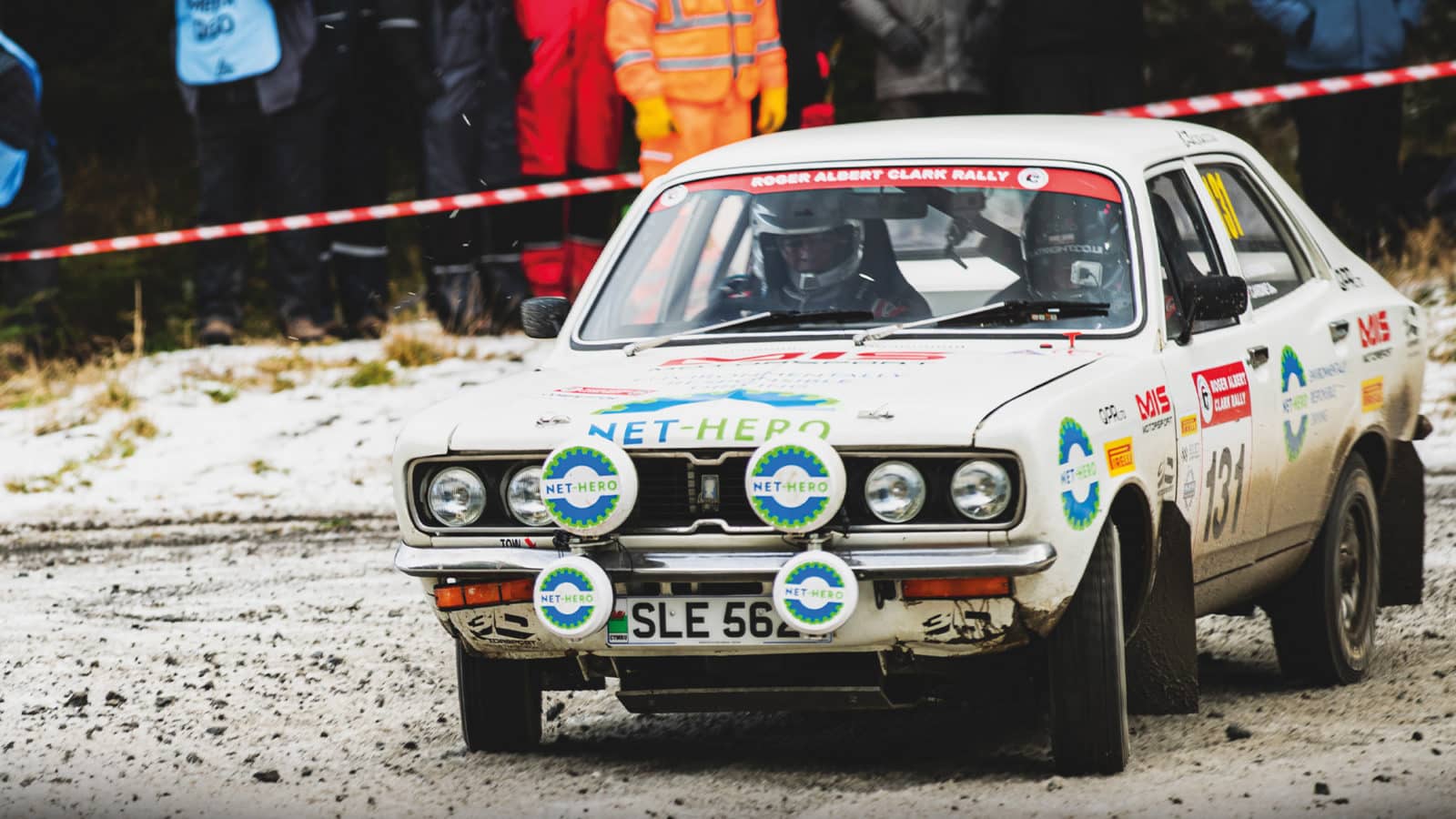
Taking a 1972 Hillman Avenger around the forests of Cumberland and Wales is easier said than done
Will Broadhead
Somewhere in a Welsh forest a Hillman Avenger rally car sits gleaming in the cool November sun. Its driver Tony Jardine and its navigator Allan Harryman, son of the legendary Terry, are posing for photos next to their freshly made steed, but behind the smiles all is not well. The car, which has been built to compete in the Roger Albert Clark Rally, isn’t finished and there is less than a fortnight until the starter’s flag is due to drop in Carlisle.
Jardine is a former Formula 1 television commentator-turned-PR man but this isn’t a publicity stunt. As it stands the car doesn’t even have an engine, and while he may not admit it, Jardine is worried.
Fast-forward two weeks and the car has indeed made it to the start, to the immense relief of the team and especially Jardine.
He might have spent a large chunk of his career in Formula 1, but rallying is where his heart is and the Roger Albert is a bucket list event for him.
The Avenger stands out among the ranks of Ford Escorts but there’s a reason it’s here. “It was my first rally car” says Jardine. “I’ve always preferred them to the Escorts and to drive one on the stages where my love affair with rallying began is a dream come true.”
“It’s not just the damage. It’s the knock-on effect of having no time to test”
The team carries a serious message with it as well, running under the NET-HERO banner and embarking on an ambitious attempt to run an entirely carbon-neutral campaign. The initiative works through a subscription service that enables motorists to buy carbon credits to offset their vehicle’s carbon footprint. “The environmental issue is extremely prominent” says Jardine. “With motor sport under serious scrutiny we hope this is a way of showing that the sport can be run in a responsible way for the planet.”
The Roger Albert itself has its sights set firmly on the past, however, recreating the halcyon age of the forest rally. The biennial event is a celebration of Britain’s round of the World Rally Championship in the 1970s and 1980s, and is contested by pre-1981 historic cars. It is a five-day event, running late into the night and using some of the greatest stages ever to grace the world championship. There are the likes of Kielder, Dyfnant and Gartheiniog, and the lure of them has attracted a record number of entries: 150 cars in total is the highest amount in the event’s 17-year history. They are an eclectic bunch too, ranging from Keith Shepherd and Rowan Corney, the septuagenarian pilots of a Ford Escort, to the BBC Top Gear presenter Chris Harris.
The event, which counts Stig Blomqvist and Gwyndaf Evans as previous winners, takes the form of 350 miles of special stages spread across the five days, beginning in the north of England and Scotland, and ending with two days in Wales. You can’t help but feel it marks the renaissance of rallying in Britain post-Covid. The sport was hit hard by the pandemic, and while circuit racing could resume, rallying, nomadic by its very nature and with its difficult-to-control crowd attendance, took longer to recover.
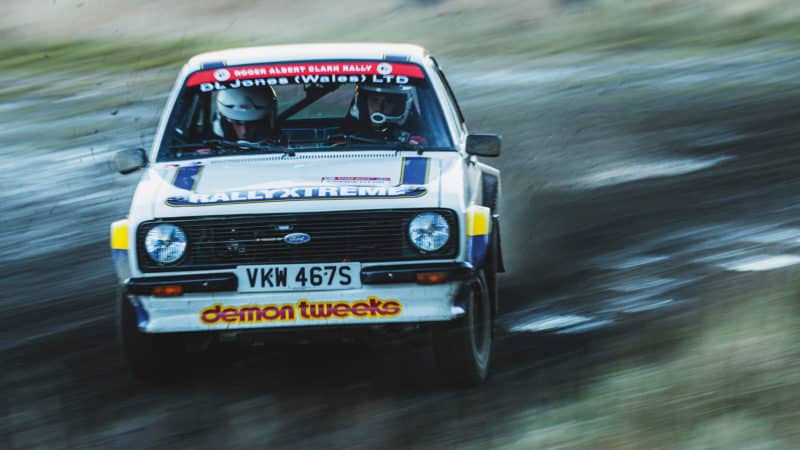
Osian Pryce and Noel O’Sullivan in the RS1800 went out with a lost wheel
Will Broadhead
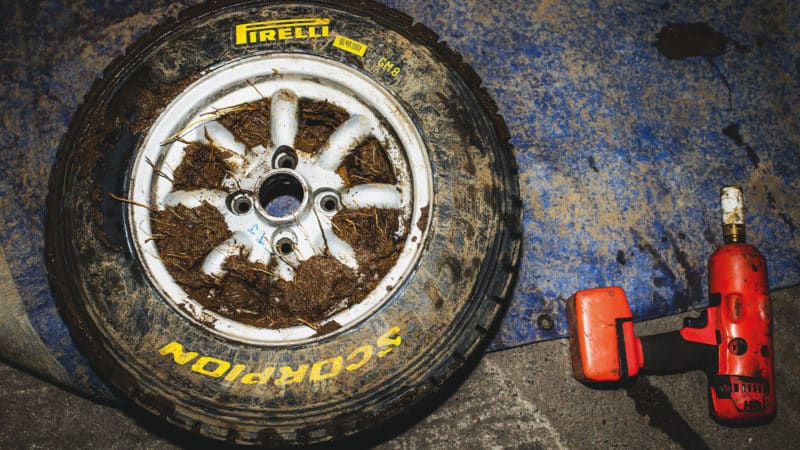
Avenger’s Pirelli
Will Broadhead
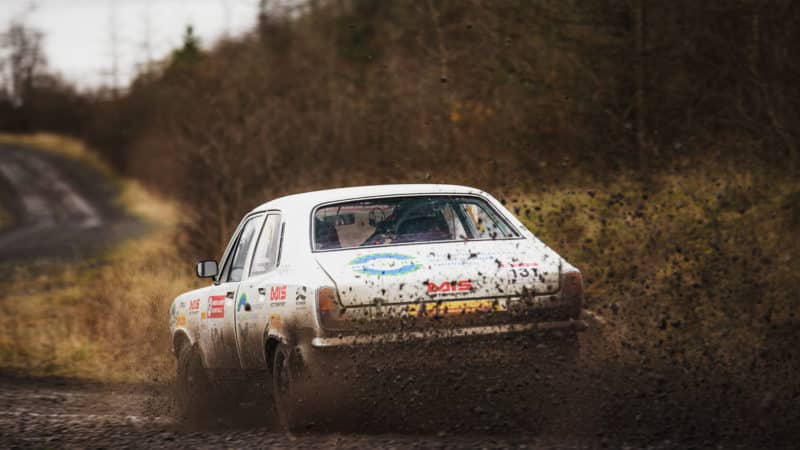
Kicking up mud around the boomerang lights
Will Broadhead
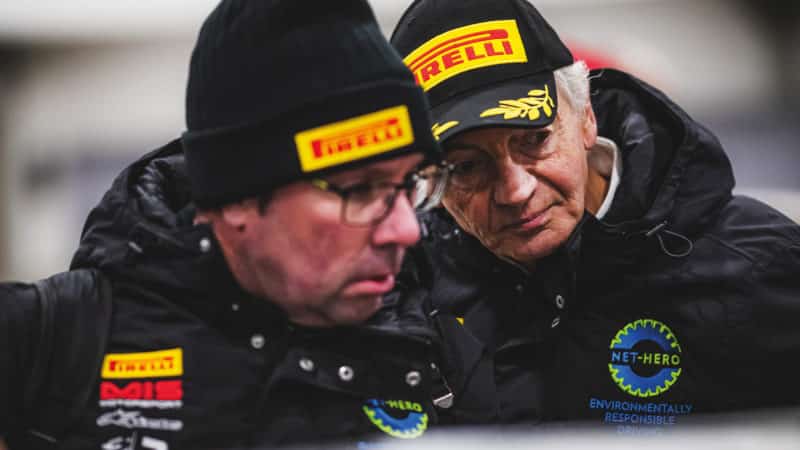
Allan Harryman, left, and Tony Jardine
Will Broadhead

Race against time to get the Avenger ready
Will Broadhead
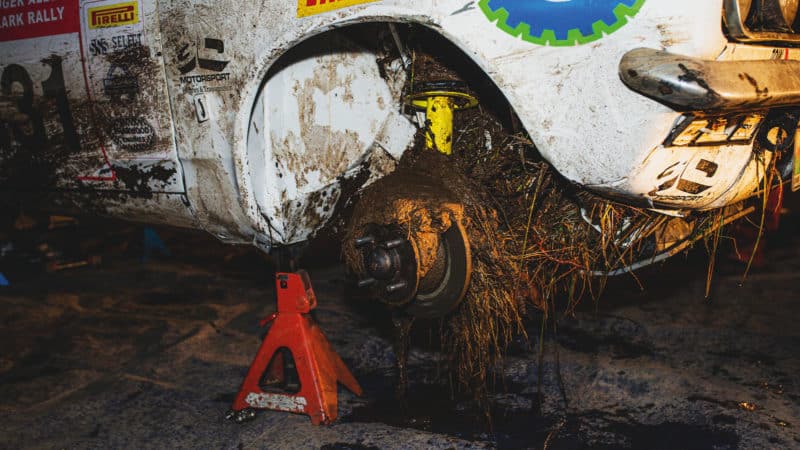
Cumberland punishment
Will Broadhead
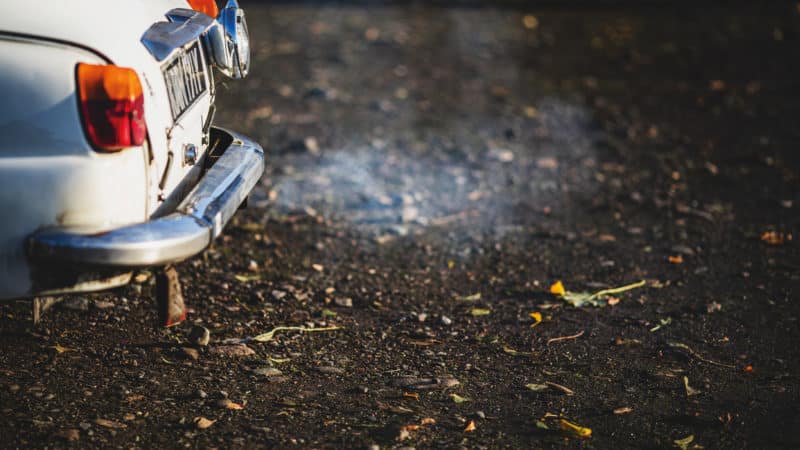
Saab 96 Sport of Stephen Higgins and Sam Spencer
Will Broadhead
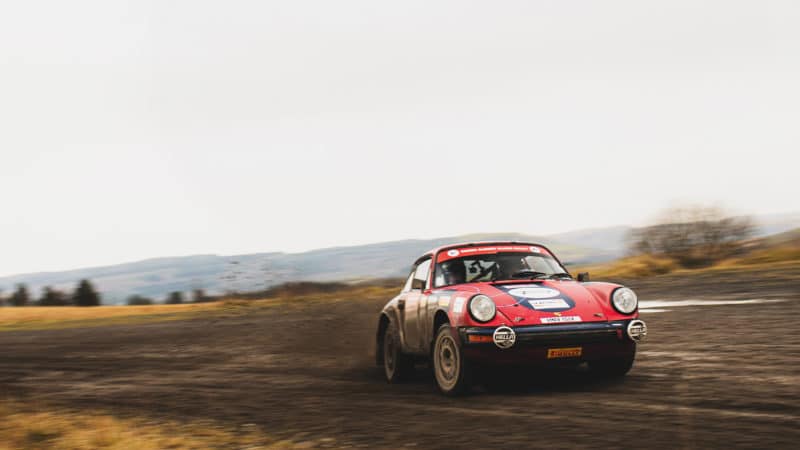
‘RAC’ winners Ryan Champion and Craig Thorley in the 911 Carrera RS
Will Broadhead

A mid-field finish for Top Gear’s Chris Harris
Will Broadhead
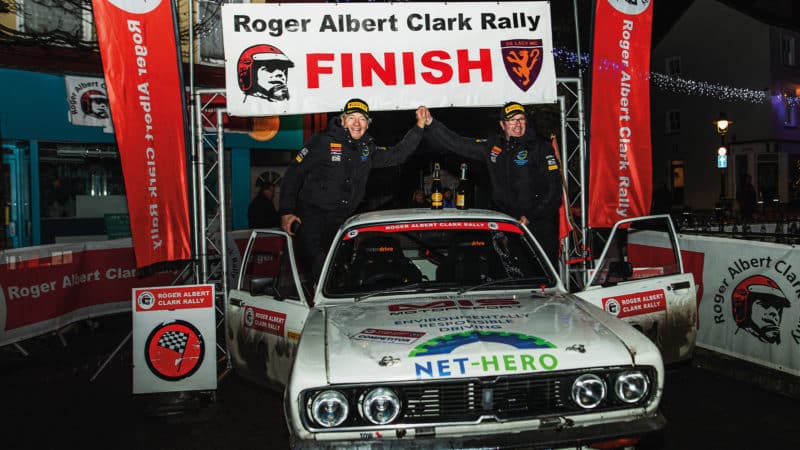
Staggering across the finish line, and a carbon-neutral rally complete
Will Broadhead
The event is dominated by Ford Escorts, somewhat unsurprisingly given their ability to tread the roughshod boards that are the narrow forest tracks. So the Hillman Avenger of Jardine and Harryman is a bit of an oddball, although it isn’t the only one on the event. An hour or so from the start and Tony is in a talkative mood. “I’m chatting because I’m nervous” he says, as he and Harryman begin to don their protective gear. Allan is a straight-talking Irishman, and with his inherent experience seems to be in command of everything, checking every detail with Eliot Retallick, the man tasked with running the team and who has built the engine that powers the Tim Tugwell-crafted car that Tony will drive.
As dusk arrives the cars hit the first of four stages to begin the event, a baptism of fire in the slender tracks of Kershope Forest in Cumberland and its tightly packed conifers that span the border between England and Scotland. Almost straight away there is a clear indication of just how tough this rally could be, as early favourite Roger Chilman careers off the road just 500yds into the event, and out. Trouble is also found by many other cars, including Chris Harris, as black ice catches out several hopefuls.
There are problems in the NET-HERO camp too. Gremlins in the clutch and less-than-desirable performance from the brakes mean a long night in service before the tests of the Kielder forest stage the following morning. But there would be much worse than that to come.
Kielder has ended the dreams of many a contestant over the years, and the roads would take their toll on the Hillman in dramatic fashion. Early in the day a brake issue meant that Jardine and Harryman would leave the road and plunge headlong into the undergrowth, leaving their day done and a race against time to restart the following morning. Seconds later, another Avenger, piloted by father-and-son duo Rory and Paul McCann left the road in the same place, with much more spectacular consequences. The rollcage did its job, but the stricken wreck was sobering to see.
The crashes seemed insignificant a few hours later when Storm Arwen arrived, causing chaos across much of the region. High winds and rain resulted in falling trees blocking stages. The evening was cancelled on safety grounds. Such was the devastation that more than 20 crews were stranded, some spending the night in their vehicles; the line between adventure and catastrophe had become extremely narrow. Thankfully all were fine and as the marooned found their way back to Carlisle the following morning news arrived that Saturday’s stages were all but inaccessible and it was announced that leg three would be cancelled in its entirety.
The Jardine camp had missed the terror in the forest, but the mechanics had spent the night battling the howling wind and icy rain in service, desperately trying to get the Avenger back on the road. “It’s not just the damage,” explains Allan Harryman, “It’s the knock-on effect of having no time to test. In reality we’re testing on the go, which isn’t the way to do it. The engine feels good, but it’s tune isn’t quite optimum which is causing clutch problems, and then there is the lack of brakes.”
After a breakfast crisis meeting a plan was hatched, and when news broke of the cancellation, giving much-needed extra time in service, it seemed that the team’s luck might be changing.
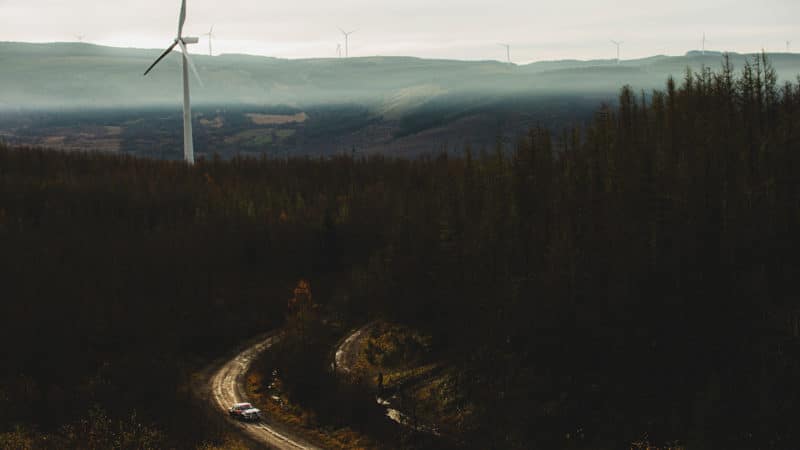
Storm Arwen may have been good news for wind power, but it caused the cancellation of stages; note the Ascona 400
Will Broadhead
The rally reconvened in Welshpool on Sunday lunchtime. Everyone who had made it to Wales was keen to get going on the hallowed tracks of Dyfnant, although the havoc wreaked by Arwen had forced the cancellation of the legendary Gartheiniog stage.
Among those re-starting was the Avenger, complete with a borrowed braking system and new hope. As it turned out problems would continue for the team almost until the finish the next day, but finish it did, achieving fifth in class and 75th overall, a respectable effort. With decent times over the last two days it was a glimpse of what could have been.
Elsewhere the rally would deliver more drama, firstly with the runaway leader Jason Pritchard and co-driver Phil Clarke in an Escort RS1800 Mk2 rolling out on the Dovey stage on the penultimate day, and then new leader Paul Barrett and second-placed challenger Osian Pryce both tumbling out of the rally (also in RS1800s) in quick succession on the final morning with just a few stage miles left to contest. When the dust settled the safari-spec Porsche 911 of Ryan Champion and Craig Thorley would emerge triumphant, the Tuthill-built machine the first non-Escort winner of the event in its history and achieving something Porsche didn’t manage in period.
Post-event Jardine and Harryman were ebullient, delighted to finish against the odds with Jardine declaring, “After the trials and tribulations, including a big off, we are relieved and delighted to complete the adventure and stagger across the finish line.”
